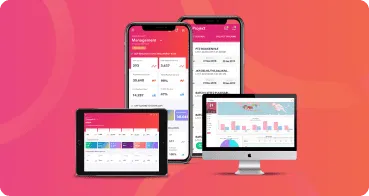Before starting a project, the main thing for the project to be implemented is the existence of a budget plan (RAB). Generally, a project requires a lot of money, so accuracy in making a budget plan (RAB) is very important. Making a budget plan (RAB) is important because it serves as a basic reference in project planning, starting from choosing vendors, and materials to project supervisors so that they run according to the agreement. Here’s an explanation of the budget plan (RAB) that Tom-Mates needs to understand!
UNDERSTANDING OF COST BUDGET PLAN (RAB)
According to Sugeng Djojowirono (1984), the Budget Plan (RAB) is an estimate of the costs required for each job in a construction project so that the total cost needed to complete a project will be obtained. Meanwhile, John W. Niron in his book Practical Guidelines for Budgeting and Wholesale Budget Plans for Building Costs (1992), Budget Plans (RAB) have the following meanings:
- Plan: The set of plans including details and procedures for the implementation of the manufacture of a building.
- Budget: Calculation of costs based on bestek drawings (plan drawings) on a building.
- Cost: The amount of expenditure related to the wholesale listed in the existing requirements.
It can be concluded that the draft budget (RAB) is an estimate or estimate required for each job in a project so that it can be seen how much the total cost is required to complete a project.
TYPES OF COST BUDGET PLAN (RAB)
According to Ir. A. Soedradjat Sastraatmadja, 1984, in his book “Analysis of the Implementation Budget”, the Budget Plan (RAB) is divided into two, namely:
1. Gross Cost Budget
Use the unit price guideline per square meter or unit price per cubic meter if it is accompanied by the contents of the space. However, conditions in the field often use the unit price per square meter. It is generally used as a quick calculation guide so that it is temporary. The determining factors for the rough cost budget include the type of building plan, number of floors, type of construction, building area, and location where the building is erected.
2. Detailed Budget
It is a budget that is calculated carefully and thoroughly by the terms and conditions of the preparation of the cost budget. In the detailed cost calculation, there are technical specifications for the quality of materials and work requirements, the volume of work items, and the unit price of work which are calculated based on the calculation of the Burgelijke Openbare Welken (BOW) analysis.
PURPOSE OF MAKING A COST BUDGET PLAN (RAB)
Cost Budget Plan (RAB) aims to find out the price/item of work as a guideline to spend costs during the project implementation period more effectively and efficiently.
PHASES OF DEVELOPING A COST BUDGET PLAN
For the RAB to be right on target in its use, here are some stages of preparing the RAB, namely:
1. Collecting data in the field and checking working drawings
Working drawings are the basis for determining what work is required and what materials are used. From the drawings, the size, shape, and specifications of the work as well as the preparation of construction methods will be obtained when in the field.
2. Perform volume calculations
That is calculating the volume of work in one unit of work.
3. Collecting local wage data
Each region has a different wage standard, for that, it is necessary to research how much wages are by the project’s target location for workers.
4. Analysis of materials, wages, and tools
- Material analysis is to calculate the volume of each material for each activity and the costs required.
- Wage analysis is calculating the amount of energy needed for each activity and the cost of the work
- Equipment analysis is to calculate what tools are needed to make work more effective and efficient
- Perform work unit price calculations utilizing the results of the work unit analysis and a list of work quantities.
BENEFITS OF COST BUDGET PLAN
- It is the basic material for submitting a project proposal in order to get an idea of how much funding is needed
- To find the benchmark price standard for a project made by stakeholders
- As a price comparison material in assessing the fairness of a project
- As details of the bid price items made by the contractor in offering project work
- The basis for determining the technical economic feasibility of an investment project before carrying out construction.
Building a project requires a lot of costs, therefore it takes accuracy and thoroughness in preparing a budget plan. To make budget calculations easier, you can use a project management application like Tomps. Tomps is an application and website-based end-to-end professional project management tool that can manage small to large projects. In addition, Tomps has customization features to suit the needs of each project. It is suitable for Tom-Mates who have a wide variety of projects. Curious about Tomps?







